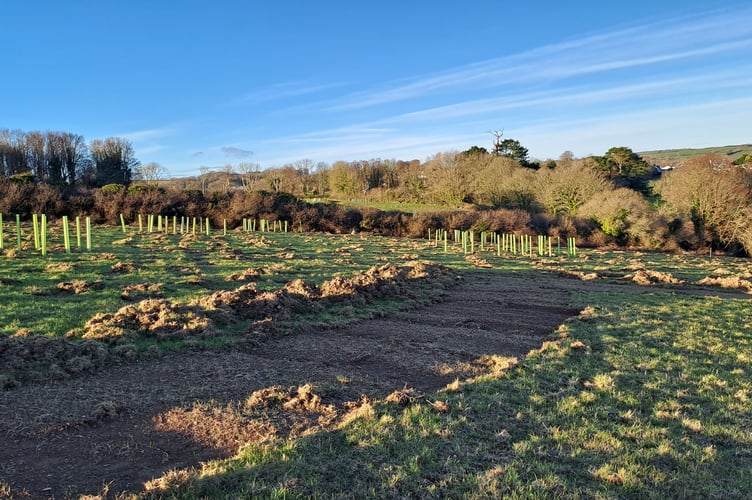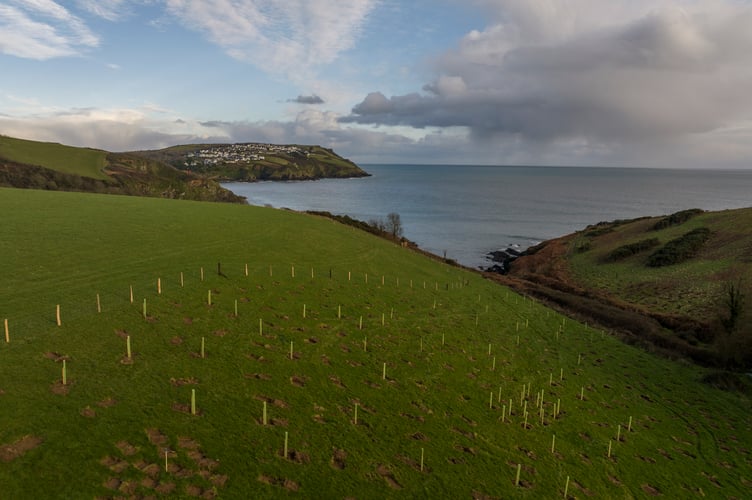AREAS of land in South East Cornwall is set to be transformed as part of a major woodland creation project being carried out by the National Trust and a team of volunteers.
As part of the charity’s plans to plant more than 20-million trees nationally by 2030, a total of 40,000 trees are being planted on Trust land at Lansallos, Fowey and Lanteglos, the aim of which is to benefit people, nature and, most importantly, the climate.
More than 11,000 trees have already been planted at Lansallos with a further 6,000 being planted this winter at Coombe Farm, Fowey adding to the 6,000 trees planted last year. A further 17,600 saplings will begin to be planted at Lanteglos next winter and planting will continue there for the next three years.
In total, in excess of 74 acres of new woodland will be created across the three projects. At Lansallos, the saplings are being planted behind the village and between existing woodlands to create a bigger swathe of woodland which will benefit nature. It will also be accessible to walkers who will be able to use existing rights of way and new permissive footpaths.

Trees play a vital role in nature, the climate and our wellbeing. However, the UK's woodlands are in decline and just seven per cent is in a good ecological state.
Andy Simmons, National Trust lead ranger for South East Cornwall, said: “We have an incredible team of volunteers who come out in all weathers to really make a difference and we are so grateful for their time. Not only will the new woodlands help to combat climate change, they will also provide invaluable refuges for some of our favourite woodland species such as the dormouse, barn owl and adder.
“We’re delighted with how well this project is going and we’re looking forward to planting thousands more trees this winter and over the next three years.”
Cornwall is one of the UK’s least wooded counties and along with providing a habitat for woodland wildlife which includes plants and fungi to mammals, birds, bees and beetles, woodlands also store and lock up existing atmospheric carbon, reduce the risk of flash flooding and prevent run off into water systems.

Volunteers recently spent the day tending to around 1,000 saplings at Lansallos that had been hit by Storm Darragh. This involved re-staking, removing and replanting damaged trees.
Richard Morton, a National Trust volunteer who is supporting the project, added: “I’m proud to have been part of the team creating this new woodland for Cornwall. I hope future generations will enjoy the landscape and enhanced biodiversity resulting from this project, further adding to the magic of the county.”
Funding for the project has come from the Forestry Commission’s ‘Woodland Creation Offer’ and the trees being planted include traditional species such as oak, beech, chestnut, sycamore, rowan, hazel, blackthorn, hawthorn, holly and willow.
The National Trust care for more than 250,000 hectares of countryside, 780 miles of coastline, one-million collection items and 500 historic properties, gardens and nature reserves.




